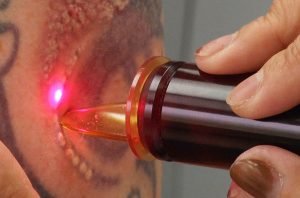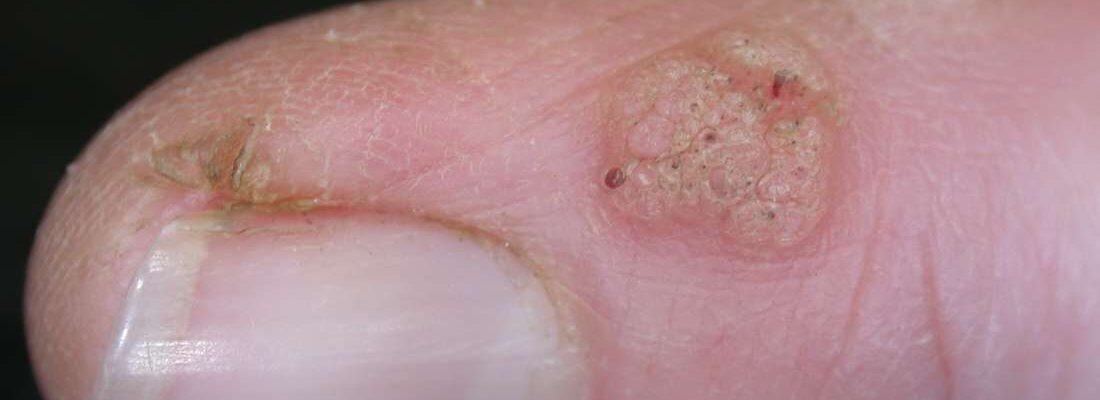Overview
Warts are small, rough skin growths caused by certain strains of the human papillomavirus (HPV). They can appear on various parts of the body, including the hands, feet, face, and genitals, and are typically harmless. However, they can be unsightly, uncomfortable, and contagious, spreading through skin contact or shared surfaces. Warts are especially common among children, individuals with weakened immune systems, and those with frequent skin exposure to public areas, such as locker rooms or pools.
Treatment for warts depends on their size, location, and impact on the individual’s comfort and lifestyle. Many warts disappear on their own over time as the body’s immune system fights the virus. However, for persistent, painful, or spreading warts, several treatment options can help remove them more quickly. Common treatments include topical salicylic acid, cryotherapy (freezing the wart with liquid nitrogen), and laser therapy. Each approach targets the wart’s tissue to encourage removal and healing. In some cases, stronger prescription treatments or minor surgical procedures may be necessary.
Most wart treatments are effective, but it can take multiple sessions for complete removal. Recurrence is possible, as the virus can remain dormant in the body even after the wart itself is gone. With the right treatment approach, warts can often be eliminated, restoring clear skin and reducing the risk of further spread.
Table of Contents
When to See a Doctor
While warts are generally harmless and may clear up on their own, there are instances when seeking medical attention is recommended. A doctor can help confirm the diagnosis and provide treatment options to remove the wart and prevent further spread, especially if the wart is persistent or causing discomfort.
You should consider seeing a doctor if:
- The wart is painful, itchy, or becomes inflamed.
- You notice multiple warts appearing or spreading to other areas.
- Over-the-counter treatments have been ineffective after several weeks of consistent use.
- The wart is located on the face, genitals, or another sensitive area where self-treatment might be challenging or risky.
- You have a weakened immune system or an underlying medical condition that could make wart treatment more complex.
- You’re uncertain if the growth is a wart, as some other skin conditions may resemble warts and require different treatment.
Seeing a doctor can help address any concerns and ensure safe and effective treatment, especially in cases where warts interfere with daily life or cause physical discomfort.
What Type of Doctor to Seek
For wart evaluation and treatment, start with a primary care physician or a dermatologist. A primary care doctor can assess the wart and may provide initial treatments. However, a dermatologist, specializing in skin conditions, is ideal for persistent or widespread warts and can offer advanced treatment options, including laser therapy or minor surgery.
For children, a pediatrician experienced in treating childhood skin conditions can provide gentle and age-appropriate treatments.
What to Expect From Your First Doctor Visit
During your visit, the doctor will perform a comprehensive examination of the wart to confirm its nature and determine the best treatment approach. Here’s what to expect:
- Medical History and Symptom Review. The doctor will ask about the wart’s duration, any symptoms like pain or itching, and any previous treatment attempts. They may also inquire about your immune health or any exposure risks.
- Physical Examination. The doctor will closely examine the wart and surrounding skin to confirm that it is indeed a wart and not another type of skin growth. This helps ensure the correct treatment plan is chosen.
- Treatment Discussion. Based on the wart’s type and location, the doctor will discuss various treatment options, such as cryotherapy, topical treatments, or laser removal. They may recommend a specific course of action and provide guidance on aftercare to prevent recurrence.
- Follow-Up Plan. For some treatments, especially if multiple sessions are required, the doctor may schedule follow-up visits to monitor progress and adjust treatment as needed.
Consulting a doctor for wart treatment can expedite removal, relieve symptoms, and prevent the warts from spreading further. Early intervention is often beneficial for persistent or painful warts, ensuring effective and safe resolution.
Wart Treatment Options

Image Source: tl.medicineh.com
There are various treatments for warts, and the appropriate method depends on the number and location of warts. Based on the specific case, a doctor may recommend the following treatments:
- Topical Ointments or Creams with Salicylic Acid. Salicylic acid is a common treatment for warts as it helps remove the top layers of skin. It gradually softens the wart tissue, making it easier to remove over time with regular application. This treatment requires consistency and may take several weeks to see results, but it is effective for many patients.
- Application of Trichloroacetic Acid. If salicylic acid is not effective, the doctor may recommend trichloroacetic acid. This acid is carefully applied to the wart by a healthcare provider. While it effectively targets wart tissue, it must be used with precision to avoid damaging healthy skin cells surrounding the wart.
- Cryotherapy (Freezing). In cryotherapy, the doctor applies liquid nitrogen to the wart, freezing it to destroy the wart tissue. The freezing process makes the wart more brittle and easier to remove. This treatment may require several sessions, depending on the wart’s size and depth, and is effective for many types of warts.
- Laser Treatment. Laser treatment uses focused light energy to burn off wart tissue. While this method is effective, it can cause slight discomfort and may leave mild scarring on the skin. Laser treatment is typically considered for warts that are resistant to other treatments.
- Minor Surgery. In cases where other treatments are not successful, a doctor may perform minor surgery. This involves using a surgical knife to cut away the wart. Local anesthesia is applied to numb the area, ensuring that the patient feels minimal pain during the procedure. Surgery is often reserved for more persistent or larger warts.
- Cauterization. Cauterization uses heat, typically from an electric current or heated instrument, to burn away the wart tissue. This process effectively cuts off the blood supply to the wart, causing the tissue to die. While cauterization is effective, it may cause minor discomfort and can lead to scarring. It’s often used when other treatments have not been successful or for warts that require rapid removal.
Warts can sometimes disappear on their own without treatment, as the immune system fights off the virus. However, new warts may reappear if the virus remains in the skin. Consulting a doctor for appropriate treatment can help eliminate warts more effectively and reduce the risk of recurrence.
Wart Prognosis
The prognosis for warts is generally positive, with most cases resolving either on their own or with treatment. Many warts disappear within a few months to a couple of years as the immune system gradually fights off the virus. However, the timeline for natural resolution can vary, and in some cases, warts may persist or spread to other areas, especially if left untreated.
With treatment, most warts respond well and can be effectively removed, although some may require multiple sessions to ensure complete resolution. Common treatments like cryotherapy, salicylic acid, and laser therapy have high success rates, though there is always a possibility of recurrence. This is because the human papillomavirus (HPV), which causes warts, can remain dormant in the body even after the wart itself has been eliminated. Recurrence is more likely in individuals with weakened immune systems.
Overall, with appropriate and timely treatment, warts are usually manageable, and the risk of long-term complications is low. Preventive measures, such as avoiding direct contact with warts and maintaining good hygiene, can help reduce the chance of recurrence or spread. Regular follow-ups with a dermatologist can also be beneficial for persistent cases, ensuring any returning warts are treated promptly for a better outcome.


